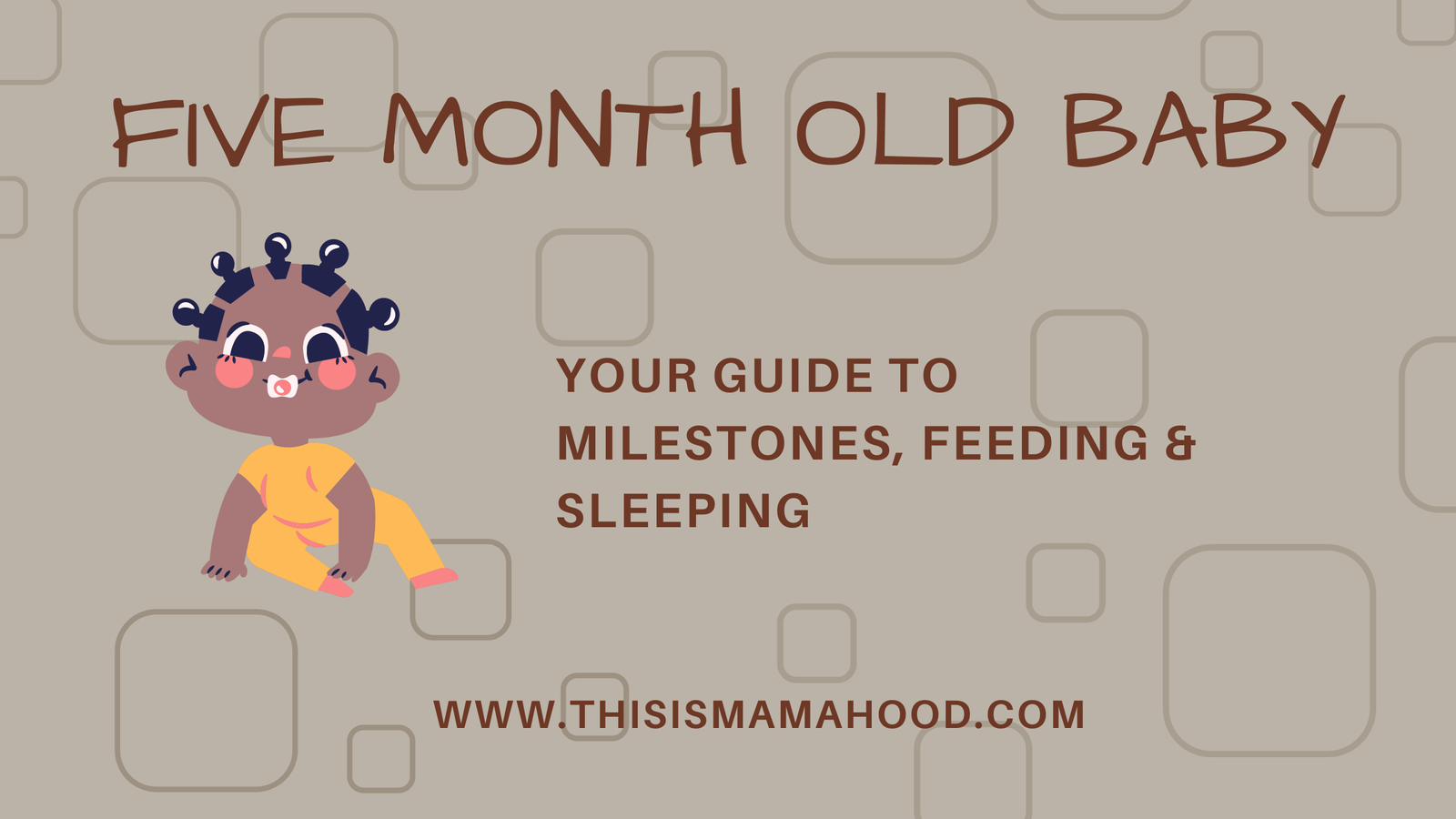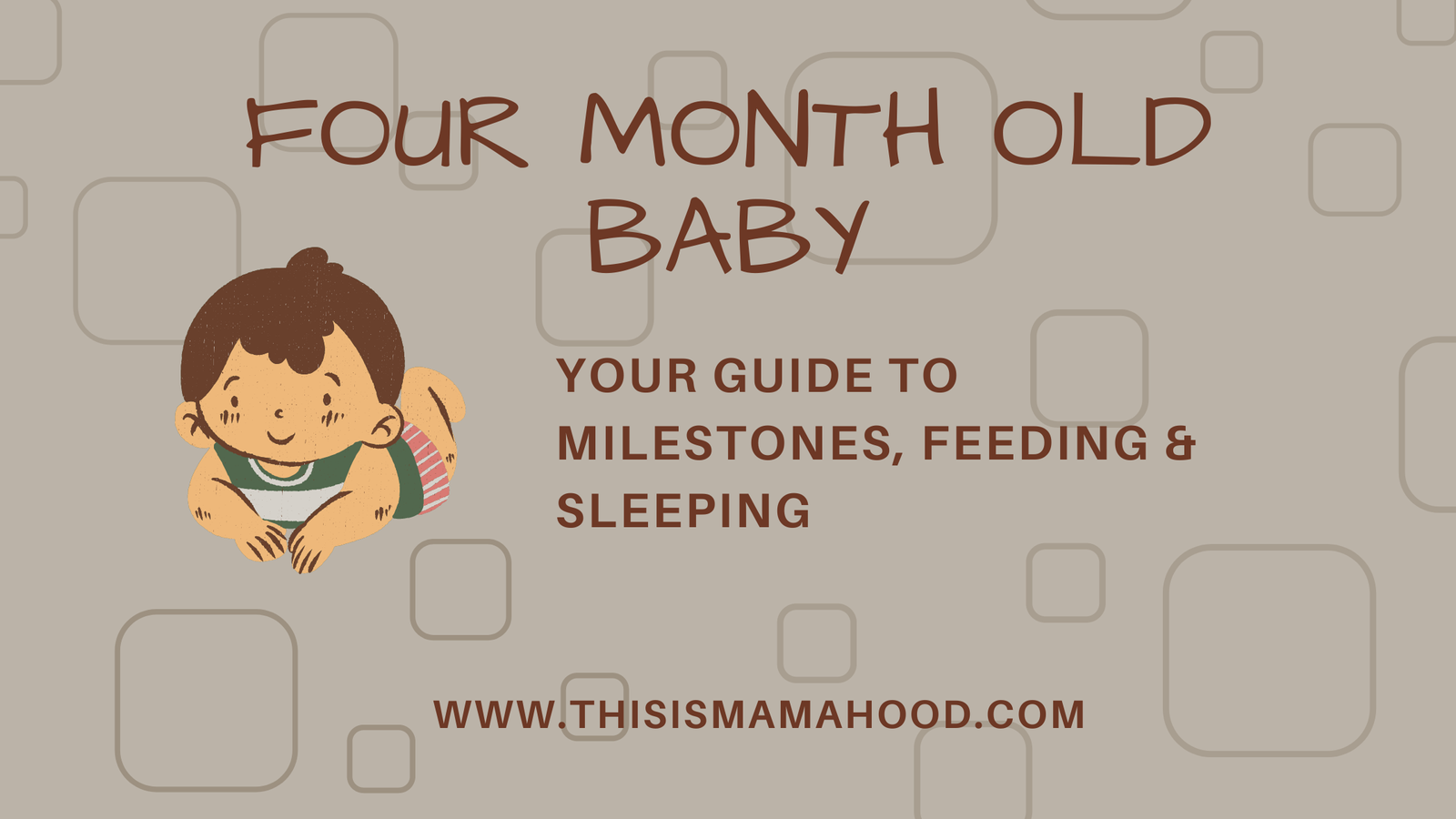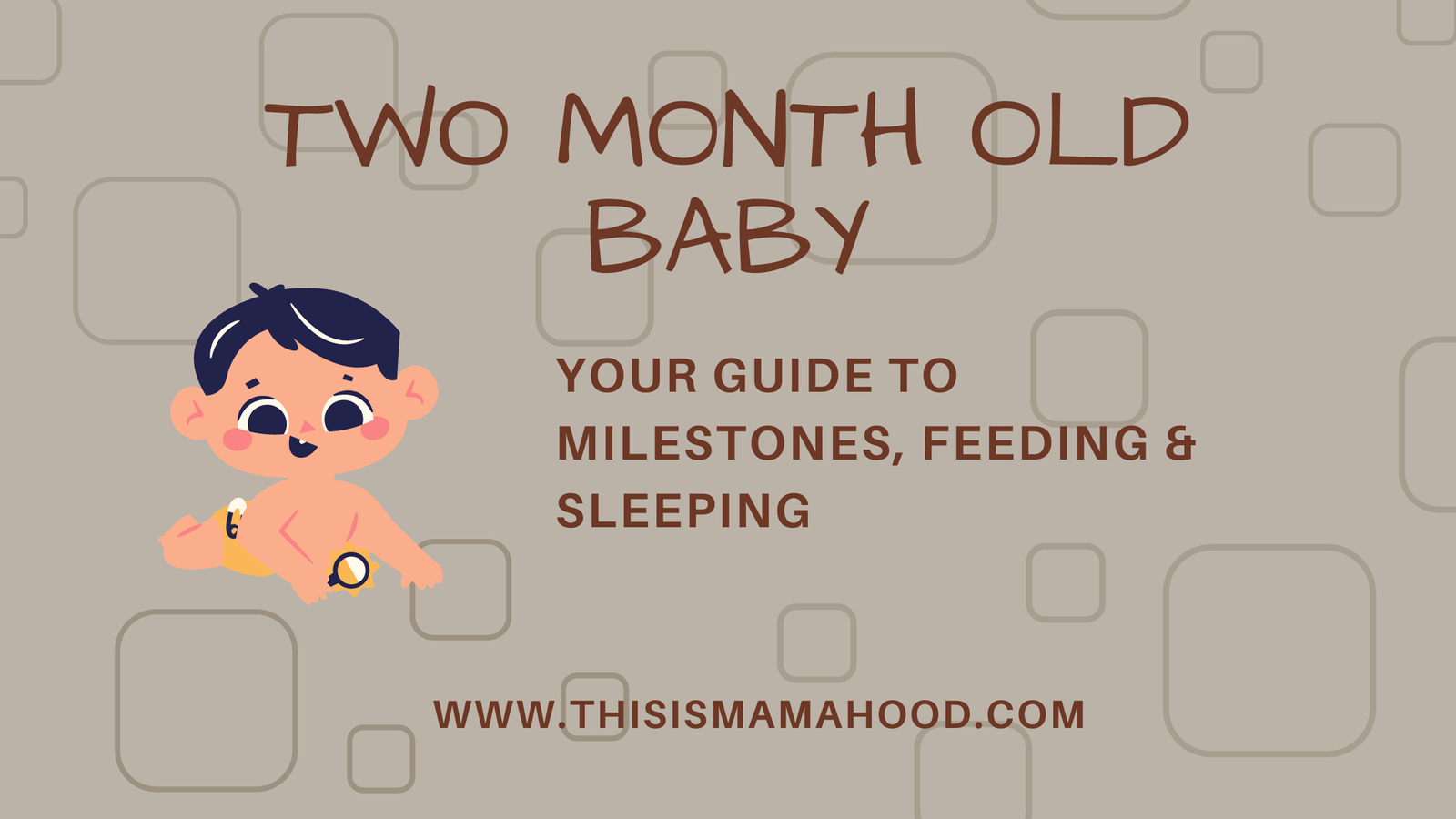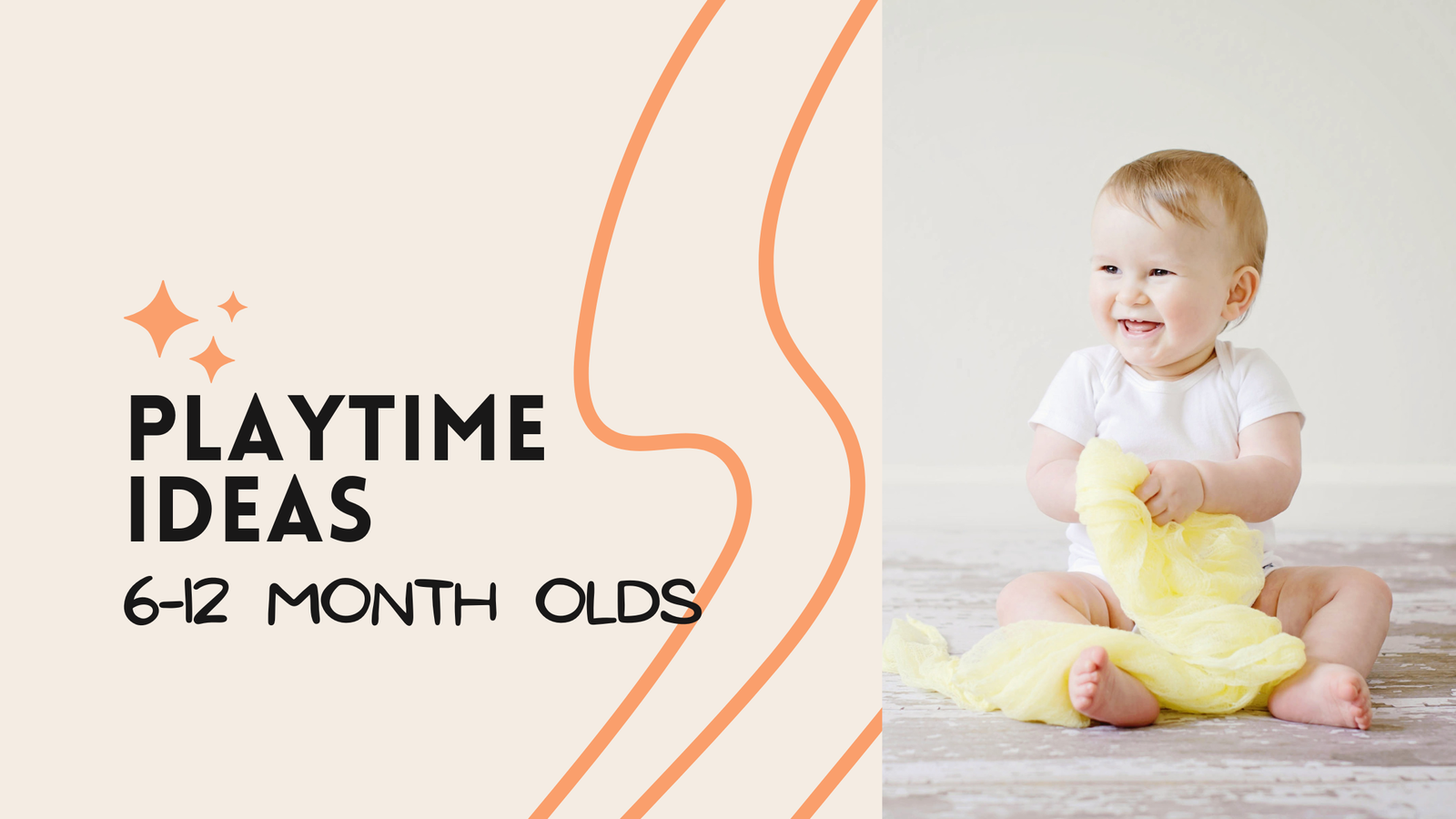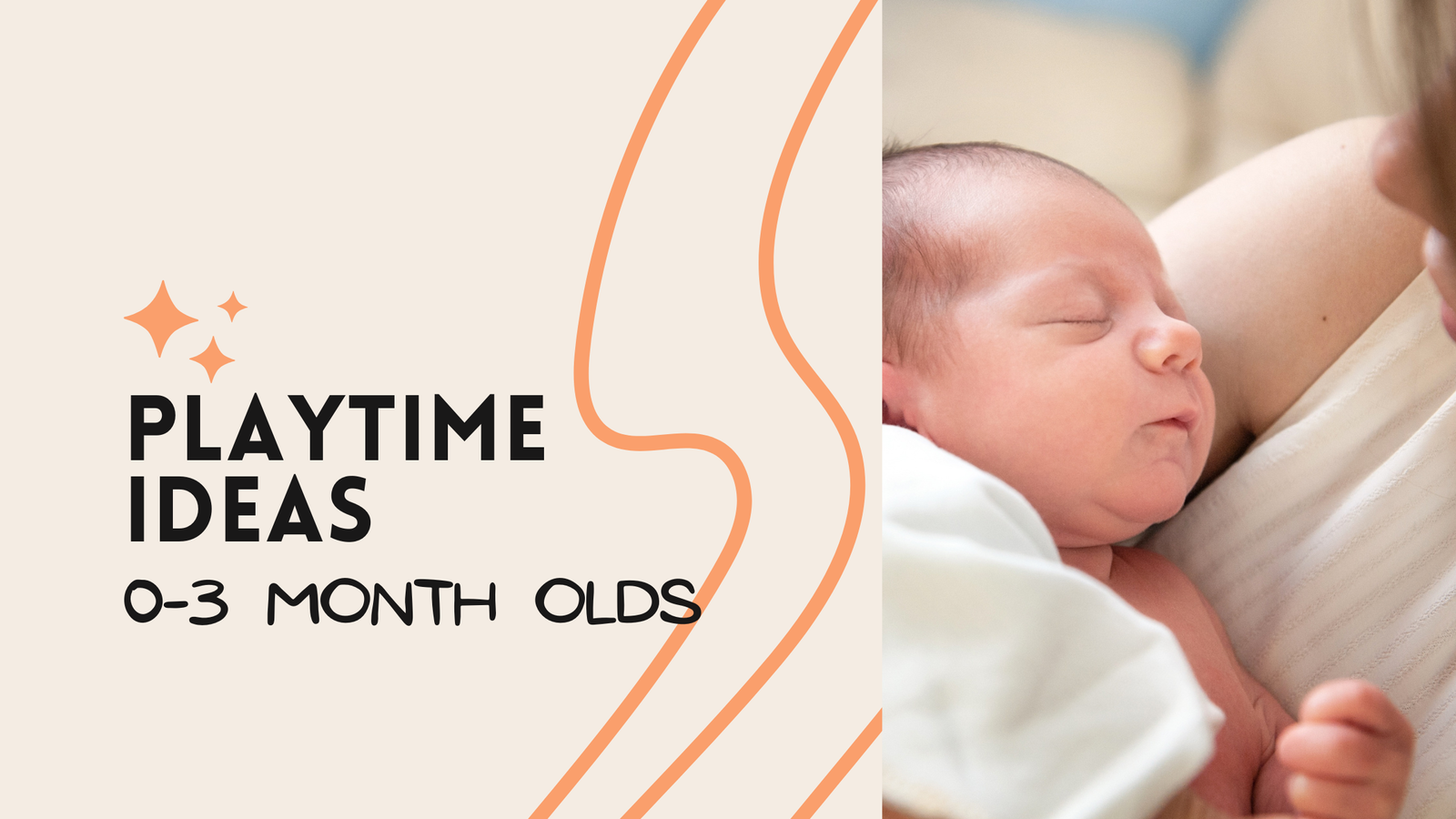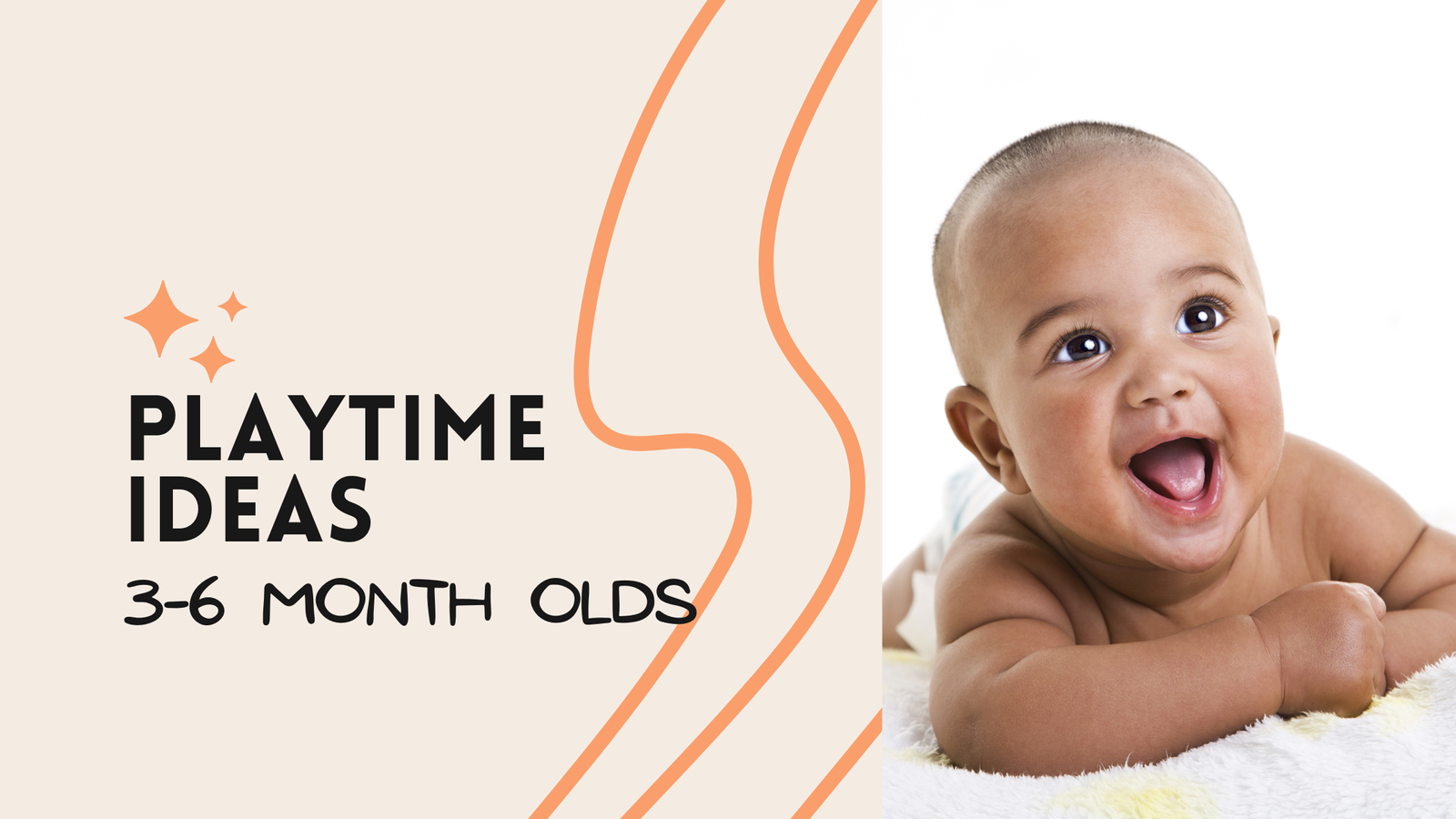Your five-month-old baby is sure growing fast! This month, they are working on becoming mobile and sitting upright on their own. If you haven’t already, this is the time to really start focusing on baby-proofing your house. Make sure things get picked up off the floor and there is nothing around for your baby to get caught in or have fall on top of them.
Five-month-old baby milestones
Physical & movement
By five months old, your baby will begin to sit upright, with assistance. If propped up by some pillows, your little one should be able to maintain a seated position for extended periods of time. Some babies may even be able to sit without assistance at this age.
Most babies by five months are able to roll from back to tummy and back again. However, don’t be discouraged if your five-month-old cannot roll both ways yet. Some babies will take longer to master this skill. If your baby is rolling onto their tummy, be on the lookout for a potential crawler in the upcoming months. Once a baby can get onto their tummy, it is not long until they start pushing up on their arms and knees.
Your baby’s hand strength should also be improving. You will notice that they can hold items for longer and with more intention. Their grasp will also be stronger, allowing them to pick up bigger and heavier things.
Sight
Although your five-month-old does not yet have 20/20 vision, their sight has greatly improved since birth. They can now decipher between different shades of the same color. They can also see things from a distance. They will be able to focus on these things without crossing their eyes like they did when they were a newborn.
Communication
Your little one should be full of stories by now. They will talk to you with their cute little babbles. Remember to talk back to them to encourage this speech development. You should notice that your five-month-old may start combining vowel sounds with constant sounds to make sounds that sound more like words. However, if you do happen to hear your baby say a familiar word (like ‘mama’), at this stage in development, it is mainly considered luck. At this point, five-month-olds do not associate a meaning with the words they are saying. So, if you do hear a ‘mama’, your baby is not saying it with you in mind. It will be a few more months until the words your baby says actually hold some meaning.

Sleeping guide for a 5-month-old baby
Your four-month-old baby should be sleeping around 15 hours each day. Most of this sleep, about 10-12 hours, will happen at night. While some babies will sleep the whole night, you may find that your baby still wakes a couple of times at night for a feeding. This is completely normal and nothing to be concerned about.
You should expect the other 3-5 hours of sleep to be spaced between two or three naps during the day. Your baby’s wake window will be around 2 hours long.
If your baby has started to roll, you may be concerned about them rolling onto their tummy during sleep. In fact, this is a major stress for many mamas. So, should you stay up all night, checking on your baby and rolling them over every time they roll? Experts recommend that you continue to put your baby to bed on their back and if they roll over during their sleep, let them be. If your baby has the muscles to roll, they will be able to move their head to prevent suffocation. Remember to keep any additional items out of the crib. That means no pillows, blankets, or stuffed animals. Only your baby and a pacifier should be in the bed.
Feeding guide for a 5-month-old baby
How much should my 5-month-old eat?
Your baby should be settling into a pretty consistent feeding schedule by now. If you are breastfeeding, continue to feed on demand. However, you should expect your sessions to be every 3-4 hours during the day.
If you are formula feeding, your baby should be expected to feed every 4-5 hours. At each feeding, they will be drinking around 4-6 ounces.
What should my 5-month-old eat?
You should wait until your baby is at least 6 months old before you start to feed them anything other than formula or breastmilk. However, older recommendations, as well as some doctors, may tell you that you can start feeding your baby solids at 4 months old. There are a few things to take into consideration before giving your baby solid food. Ask yourself these questions to decide if your baby is ready:
- Can your baby sit up alone or with support?
- Is your baby able to control their head and neck?
- Does your baby open their mouth when food is offered?
- Does your baby bring objects to their mouth?
- Does your baby try to grasp small objects, such as toys or food?
If the answer to any of these questions is no, then your baby is not ready for solid foods and it is best to wait. It is highly recommended that the answer to all of the above questions is yes, as well as your baby reaching 6 months of age, before giving your baby anything other than formula or breastmilk.
How do I play with my 5-month-old?
At five months old, time with your baby will be all about playing. They should be full of smiles and giggles and they will be starting to reach for and grab toys. Playtime will now start to be a little more interactive.
Continue to sing and read to your baby. This will encourage their speech and language development. Make sure to talk to your baby as much as possible during the day. Don’t know what to talk about with a baby? That’s okay, all you have to do is narrate everything you do. Think: “Mommy’s going to pick you up now”, “Mama is washing the dishes; look at the bubbles”. When your baby coos and babbles at you, mimicking those sounds and talking back will further encourage their communicative development.
Your baby is starting to reach for and grab toys, so be sure to lay toys out in front of them during tummy time. This will help to strengthen their core and neck muscles, as well as get them moving, as they reach their little arms out in front of them. When laying on their back, use a playtime mat that allows toys to dangle above them.
Now that your baby has good head, neck, and core muscles built up, you can start putting them in an exersaucer or jolly jumper. These toys can help further develop your baby’s core muscles. However, be sure to limit your baby’s time spent in these devices. You should also make sure to read the manufacturer’s instruction manuals to ensure the device is set up correctly for your baby’s height.
Safety for 5-month olds
Your baby is starting to become more mobile and more interested in the world around them. Therefore, this is a good time to review the safety measures for your 5-month-old.
If your baby has started to roll, you may be concerned about them rolling onto their tummy during sleep. In fact, this is a major stress for many mamas. So, should you stay up all night, checking on your baby and rolling them over every time they roll? Experts recommend that you continue to put your baby to bed on their back and if they roll over during their sleep, let them be. If your baby has the muscles to roll, they will be able to move their head to prevent suffocation. Remember to keep any additional items out of the crib. That means no pillows, blankets, or stuffed animals. Only your baby and a pacifier should be in the bed.
Since your baby is now rolling, and most likely will be crawling in the upcoming months, you should take a look around your house and start baby-proofing if you have not already. Make sure outlets have safety covers, strings from curtains and other objects are tied up, furniture is secured to walls and appliances have safety locks.
You should also scan your floor constantly for small objects that may end up in your baby’s mouth.
Schedule for a 5-month old
Now that your baby is doing more of their sleeping during the night and having longer wake windows during the day, it is the best time to start a schedule. Remember, not to be too strict with yourself and the schedule. Don’t stress out if you don’t follow it minute by minute. Schedules are rough estimates of the activities that you will do each day.
You can start having activities throughout the day that remain generally the same throughout the week, such as taking a walk in the morning or reading books in the afternoon. If you don’t already have an established nighttime routine, now would be a good time to start.
Below is an example of a typical schedule for a 5-month-old baby. Adjust the times based on when your baby wakes in the morning and when they go to sleep. You can fill the playtime slots with any activities that you feel fit.
7:00 am: wake up routine: diaper change, get dressed, cuddles, etc
7:30 am: feeding
8:00 am: playtime – tummy time
8:30 am: naptime
10:00 am: feeding
10:30 am: playtime – go for a walk, read some books, etc
12:00 pm: naptime
2:00 pm: feeding
2:30 pm: playtime – play mat, tummy time, etc
3:30 pm: naptime
4:30 pm: feeding
5:00 pm: playtime – cuddles, talking to your baby, peek-a-boo, etc
6:30 pm: bedtime routine: bath, pajamas, story, etc
7:00 pm: feeding and place down for sleep

